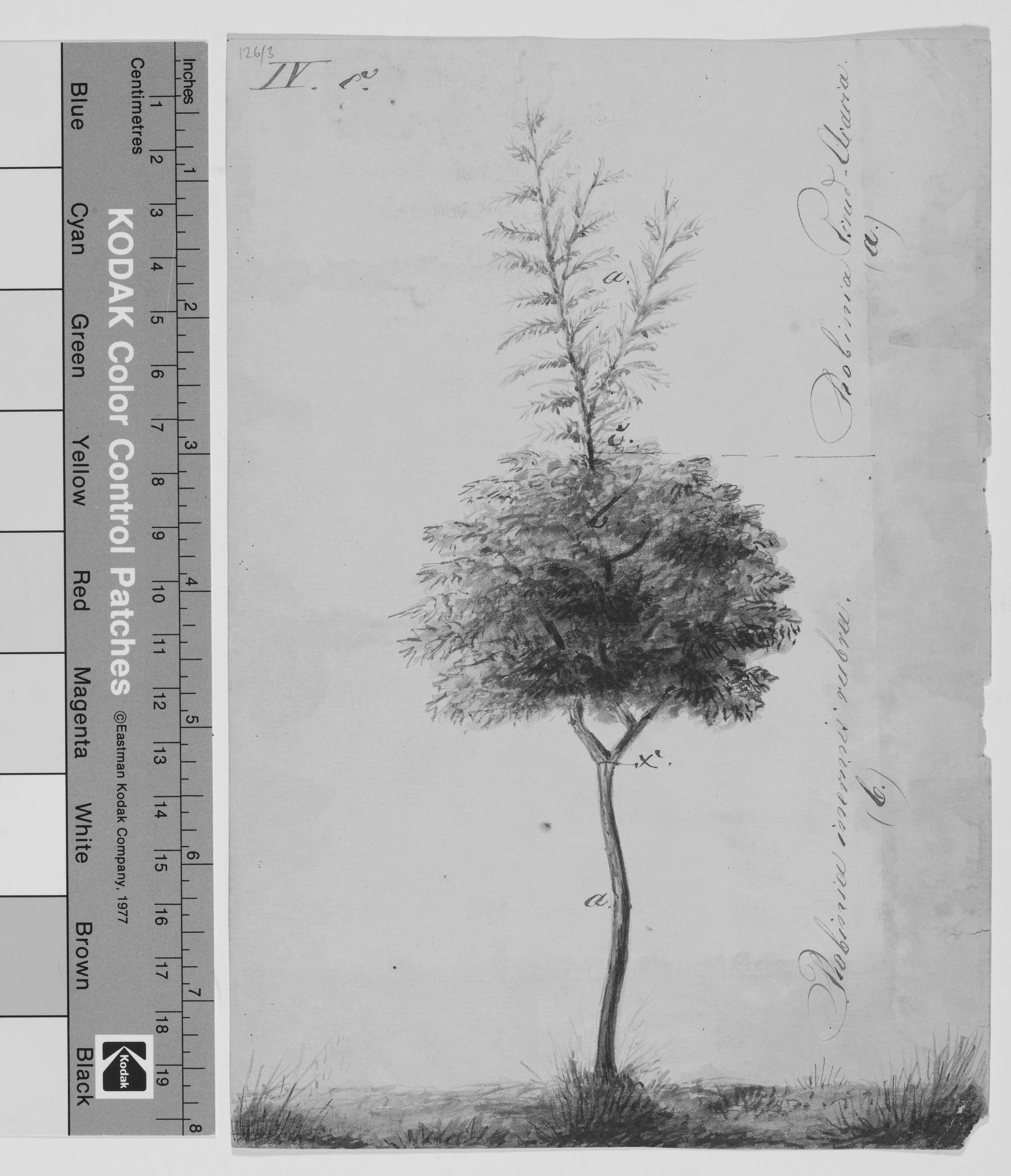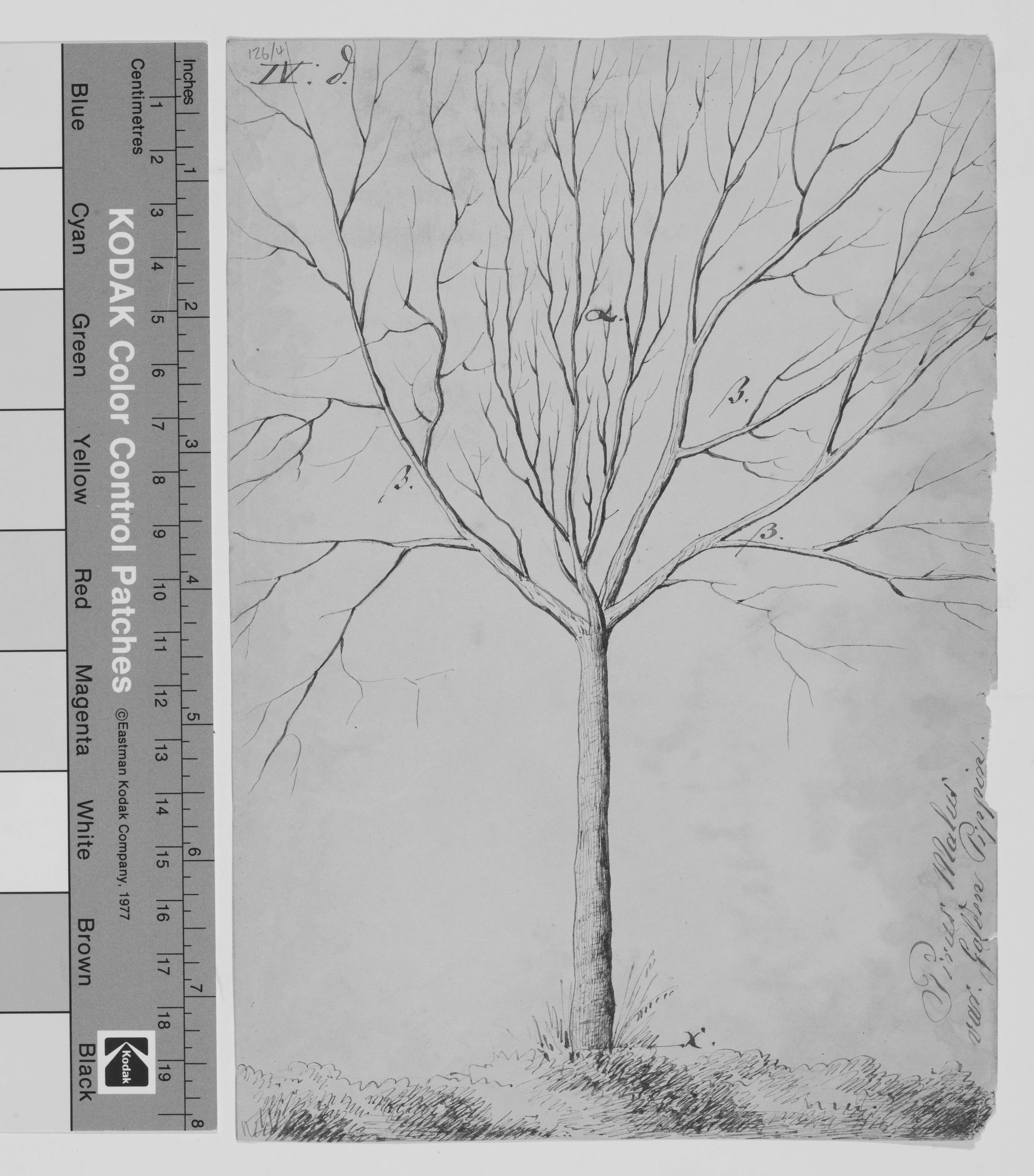From Adolf Reuter 23 September 1869
Sanssouci near Potsdam
the 23. 9. 69.
Dear Sir!
Enjoyed very much indeed by your honourable and kind answer, I take me again the liberty to address a letter to you, in the hope not to be immodest to molest you my dearest Sir so very often—1
I tell you my sincere thank for your great amability and I feel me very much honoured that you have accepted my simple knowing.
Reading nearly every day your celebrated book,2 I send you with this letter again some examples about the variation of the plants, which will be perhaps interesting and also useful for you—as a small stone to your great building.—
Excuse me, when you will find also closed two drawings by me, I am sorry, that I am not capable to make it better, but I think it will be sufficient to explicate it in the right manner.
But I will not longer molest you, and so I pray you only to accept this letter in the same indulgent manner as the first.
With the best wishs for your health and the assurance of my greatest adoration to you, I have the honour to remain | Dearest Sir | your | very obedient servant | Adolph Reuter.
[Enclosure 1]
I. The propagation by the root of a plant with white spotted leaves:
Reading in your book the example of the white spotted Symphytum officinale propagated by the roots,3 I did believe that it may be perhaps also interesting for you to hear, that I was propagating Rubus fruticosus foliis variegatis in the same manner.4
Between about 30 plants has been again not one variegated plant,— the were all-together green leaved, looking like the common Black-berry and so I was always obliged to use the propagation by cuttings or grafting.—
II. The species and varietys of the Vinca minor and Vinca major:
You told in your book, that the varietys and species of the Vinca are very scarcely fructificating5— indeed but it is curious what this plant is so very changeable. We are in the possession of 3 species with different varie
a, Vinca herbaria (without any variety.)
b, Vinca minor foliis argent. variegatis.
" " flore coeruleo.
" " " purpureo.
" " " albo6
‘ ’ inter media/
remarquable variety, because not creeping like the others, she is quite closed and very much to propogate by separation.
c: Vinca major
" " foliis reticulatis.
" " " argent. variegatis.
" " " aur. variegatis.7
The last has been discovered by me, because I did find a shoot with yellow spotted leaves in a plant of Vinca major fol. argent. variegatis, which I used for a cutting, but believing, that he would be again in short time quite green or white spotted like the mother-plant.—
My intension was to keep the yellow spotted variety and I was also so happy and more as hundred plants of her are now ornating our gardens.—
You will find closed some leaves of the Vinca major fol. aur. varieg., some leaves of the mother—Vinca major fol. argent. varieg. and also some fruits of the common Vinca major et minor.
III
A very good argument, that the varietys are often more hardy or tender as the mother species may be mentioned. Syringa persica, which as a young plant will be often attacked in our country by the frost but never the more strongly growing variety Syr. pers. laciniata.
The also closed variety—Syringa persica mimosaefolia is always very sensible and it is nearly quite impossible to cultivate8 the last in the open ground she is mostly only a green-house plant for our country
IV.
It is indeed a curious fact, that some varietys of trees and shrubs will often show again past 10–15 years their original type from some years:
a, Carpinus Betulus quercifolia, from this fine looking tree is standing in the garden of Sanssouci an exemplar ⟨a⟩bout 18 high, which has large branches with small leaves like an oak and other with leaves like the quite common Carpinus Betulus.9
b, Platanus orientalis cuneata, a tree about 15’ high was always covered with foliis cuneatis, but this year alonoe the branches are mixed with leaves like the common Platanus orientalis.10
c. Robinia Pseud. Acacia inermis rubra, a beautiful variety, where the branches are forming a regular closed sphere from dark green colour is also planted at Sanssouci and the tree may be 12 years old. Last year on the highest top (c’.) of the crown was growing a shoot now longer as S11 and—representing the quite common Robinia Pseud. acacia.— (x the place where the Rob. Ps. inermis rubra has been grafted.)12
d. Another fact not less interesting as the first is an apple tree (Golden Pipping)(inoculated on the ground x.) which has a fine looking crown, formed by his branches with the exception of one (
symbol
), which has a quite pyramidal form.—13What may be the reason?–
Perhaps it will be his parents original character or what will be also not quite impossible, the character of the savage stock.
For to be sure, that the pyramidal character will be constant so I have grafted from him and it will be certainly quite interesting when we obtain in this manner a pyram⟨idal⟩ growing apple tree.—
V.
I send you also for the curiosity 3 different kinds of leaves from the common Symphoria racemosa/Symphoricarpor race⟨mosa⟩ which I did find in a hedge formed by this shrub.
I think it will show us the origin ⟨ ⟩ or the affinity with the Caprifoliaceae to which family the plant is belonging.14
VI. The influence of the wild stock on the graft!—
a, Some years ago I did find between my grafted Fraxinus excelsior aurea (variety with prettily yellow coloured wood) an exemplar, which did have not the same fine colour as all the others, it was quite different looking—regular gray yellow.
What was the cause?—
The wild stock from this ash tree was Fraxinus pubescens and not like the others— Fraxinus excelsior.15
b, Acer Negundo californicum, van Houtte (Negundo fraxinifolia californica) a very good variety of the common Acer Negundo, not only because the tree is growing more strongly, so the wood of him is also quite white gray coloured with a tender powder.
For this reason I did propagate by inoculation about 80 exemplars of the common Acer Negundo (5’ high), but the results has been not the best, because all my grafts did accept the character of the wild stock and so I was always obliged to use the cuttings and layers propagation.16
VII. The influence of the graft on the root stock.
a, Ptelea trifoliata foliis aur. variegatis, from this shrub I did receive some eyes, which I grafted on the common Ptelea trifoliata, but it was singular, that also not one of the eyes was growing, however was it not wonderfull?17 that some months afterwards the shrub was covered with yellow spotted leaves like the mother shrub from whom I did receive the eyes:—
I think—it was the same phenomen⟨on⟩ as with the variegated ash tree, which has been described in your book.18
b, Acer colchicum rubrum Hort. (Acer laetum C. A. Mey) a beautiful and very much estimated tree has been propagated in our Garden every year and mostly by inoculation or copulation.19
Because the sleeping eyes20 often has b killed in the winter-time or also yet in ⟨the⟩ spring when she begin to grown so I did observe twice a very curious fact.
Once at an copulated plant the wild stock (Acer platanoïdes) did accept the regular character of the Acer colch. rubrum because the graft was not growing.21
The other time perhaps 30 inoculated Acer platanoi trees where the eyes have been destroyed by the frost did change their character in this manner, that all the leaves of them has been coloured and formed not regularly but similarly like the Acer colchicum rubrum.
c, A valuable example of the affinity between Prunus spinosa and Amygdalus communis will be the result of an Amygdalus communis inoculated on a Prunus spinosa.22
The first (the Amygd.) was not easily growing because it was forgotten to take of the young shoots of the wild stock and so did find, that one of the last, sitting just under ⟨ ⟩ inoculation did have the leaves in the middle of the Prunus spinosa and Amygdalus communis.
This fact is the most remarquable appearance for me in all the time, that I have been observing, working in the nature and living between the plants. Reuter.
[Enclosure 2]23

[Sketch of Robinia rubra]
[Enclosure 3]

[Sketch of Pirus Malus]
CD annotations
CD note:
Reuter
(1)Rubus var -- not propagated by roots 3) Syringa vars different degrees of Hardiness
p 4 Sport in foliage in Platanus & Robinia. -- both cases of reversion. apple on measure of growth [‘say Herr Reuter has given me [second] case’ added
p 5. var graft-hybrid?
7) -- variegated Ptelia [1 word illeg] died, but which parent
affected graft-hybrid between Prunus & Amygdalus but not [1 word illeg]
enough to [1 word illeg]
Footnotes
Bibliography
Correspondence: The correspondence of Charles Darwin. Edited by Frederick Burkhardt et al. 29 vols to date. Cambridge: Cambridge University Press. 1985–.
Fiala, John L. 1988. Lilacs: the genus syringa. London: Christopher Helm.
OED: The Oxford English dictionary. Being a corrected re-issue with an introduction, supplement and bibliography of a new English dictionary. Edited by James A. H. Murray, et al. 12 vols. and supplement. Oxford: Clarendon Press. 1970. A supplement to the Oxford English dictionary. 4 vols. Edited by R. W. Burchfield. Oxford: Clarendon Press. 1972–86. The Oxford English dictionary. 2d edition. 20 vols. Prepared by J. A. Simpson and E. S. C. Weiner. Oxford: Clarendon Press. 1989. Oxford English dictionary additional series. 3 vols. Edited by John Simpson et al. Oxford: Clarendon Press. 1993–7.
Variation: The variation of animals and plants under domestication. By Charles Darwin. 2 vols. London: John Murray. 1868.
Summary
Sends notes on variation in plants.
Letter details
- Letter no.
- DCP-LETT-6905
- From
- Adolf Reuter
- To
- Charles Robert Darwin
- Sent from
- Sans Souci, Potsdam
- Source of text
- DAR 176: 126
- Physical description
- ALS 3pp, encl AmemS 8pp †, 2 sketches
Please cite as
Darwin Correspondence Project, “Letter no. 6905,” accessed on
Also published in The Correspondence of Charles Darwin, vol. 17


